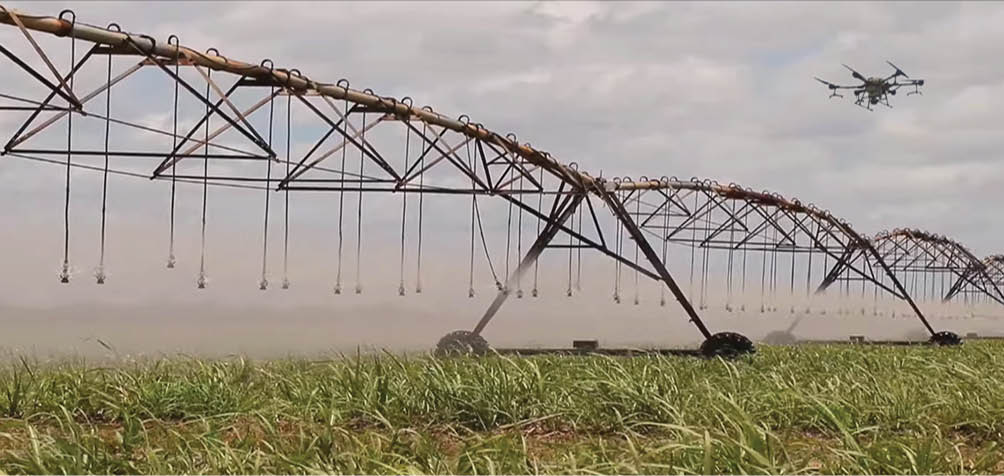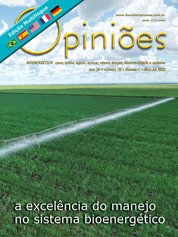Fábio Lemos de Brito
Gerente Agrícola da Impacto Bioenergia
OpAA76
Os desafios para a produtividade no Nordeste
O setor sucroenergético desempenha um papel fundamental na busca por fontes alternativas de energia, uma vez que é responsável pela produção de biocombustíveis, substitutos do combustível fóssil, reduzindo a dependência do petróleo e contribuindo para a mitigação das mudanças climáticas. Diante disso, o setor assume um papel relevante no projeto de transição energética do mundo, em busca de fontes de energia limpa e renovável.
Além disso, a cana-de-açúcar é uma cultura versátil e pode ser utilizada em diversas aplicações, como na produção de bioeletricidade, bioplásticos, biocombustíveis de aviação, entre outros, o que confere a essa cultura uma vantagem em relação a outras fontes de energia renovável.
Outro aspecto importante é a sua capacidade de gerar emprego e renda para as comunidades locais. A produção de cana-de-açúcar é intensiva em mão de obra e, por isso, tem o potencial de promover o desenvolvimento econômico e social em áreas de pobreza e de exclusão social. No entanto, é importante ressaltar que a produção de biocombustíveis a partir da cana-de-açúcar não é isenta de impactos ambientais e sociais negativos.
Portanto, é fundamental que o setor sucroalcooleiro atue de forma responsável e sustentável, adotando práticas que minimizem os possíveis problemas ambientais e sociais de sua atividade, ao mesmo tempo em que contribua para a promoção da segurança energética e para a redução das emissões de gases de efeito estufa.
Portanto, é fundamental que o setor sucroalcooleiro atue de forma responsável e sustentável, adotando práticas que minimizem os possíveis problemas ambientais e sociais de sua atividade, ao mesmo tempo em que contribua para a promoção da segurança energética e para a redução das emissões de gases de efeito estufa.
Dentro desse contexto, e consolidada como uma das principais atividades agrícolas do Nordeste brasileiro, o cultivo da cana de açúcar tem sido, por décadas, responsável por grande parte da geração de empregos e renda na região. No entanto, a produção de cana-de-açúcar no Nordeste enfrenta desafios específicos. Com relação à competitividade, de acordo com dados do IBGE, a média de produção de cana-de-açúcar na região Nordeste em 2020 foi de cerca de 72 toneladas por hectare, ao passo que, na região Sudeste, a produtividade alcançou cerca de 84 toneladas por hectare. Portanto, a adoção de novas práticas e técnicas agrícolas torna-se ainda mais fundamental para o desenvolvimento sustentável da produção de cana-de-açúcar no Nordeste brasileiro.
É importante salientar que a produtividade é um dos fatores mais importantes para a determinação do custo de produção da indústria sucroalcooleira, tendo em vista que, quando há uma maior produção de cana-de-açúcar por hectare, maior será a diluição dos custos fixos da produção, tanto para a área agrícola quanto para a área industrial. Assim, a melhoria da produtividade dos canaviais é fundamental para a redução dos custos de produção da indústria sucroalcooleira e para a sua competitividade no mercado global.
Com esse objetivo, o que se tem mostrado fundamental para a melhoria da produtividade dos canaviais, sem dúvida, são os avanços na tecnologia, nos equipamentos e no uso de insumos, novas práticas e técnicas agrícolas têm-se mostrado essenciais para impulsionar a produção de cana-de-açúcar. Entre essas práticas, podemos destacar: A agricultura de precisão, que é uma abordagem tecnológica para a produção agrícola que utiliza dados e informações precisas para otimizar o uso de insumos e recursos.
Essa abordagem é baseada na coleta de informações por meio de sensores e tecnologias de georreferenciamento, como GPS, e na análise desses dados para a tomada de decisões. A agricultura de precisão possibilita monitorar o desempenho das culturas, identificar áreas com problemas de crescimento, realizar a aplicação localizada de insumos e implementar práticas agrícolas mais eficientes e sustentáveis.
Essa abordagem é baseada na coleta de informações por meio de sensores e tecnologias de georreferenciamento, como GPS, e na análise desses dados para a tomada de decisões. A agricultura de precisão possibilita monitorar o desempenho das culturas, identificar áreas com problemas de crescimento, realizar a aplicação localizada de insumos e implementar práticas agrícolas mais eficientes e sustentáveis.
Entre as tecnologias utilizadas na agricultura de precisão, estão os sistemas de informações geográficas (SIG), os drones e os satélites de monitoramento remoto. Essas tecnologias permitem a coleta de informações em tempo real sobre as condições do solo, das plantas e do clima, o que ajuda os agricultores a tomar decisões mais precisas sobre o manejo das culturas.
Dentro desse contexto, os drones agrícolas, também conhecidos como VANTs (Veículos Aéreos Não Tripulados), têm ganhado cada vez mais destaque. Esses dispositivos são equipados com câmeras e sensores que permitem a coleta de dados e imagens de alta resolução do campo, o que tem possibilitado tomadas de decisões mais precisas sobre o manejo das culturas.
Além da utilização dos drones agrícolas para obtenção e posterior tratamento de imagens, os drones têm desempenhado importante papel no controle de pragas e doenças, no qual esses equipamentos podem ser equipados com sensores que identificam pragas e doenças nas plantas, permitindo, assim, medidas de controle de forma mais precisa e eficiente, além de pulverização, onde alguns modelos de drones podem ser equipados com sistemas de pulverização que permitem a aplicação localizada de agroquímicos, reduzindo o uso de insumos e minimizando os impactos ambientais.
Outra técnica que merece destaque, é a irrigação 4.0, que consiste em uma abordagem tecnológica buscando otimizar o uso da água por meio da automação e da conectividade de dispositivos e sistemas. Essa abordagem utiliza tecnologias de internet das coisas (IoT): sensores, análise de dados e inteligência artificial para tornar a irrigação mais eficiente e sustentável.
Entre as principais características da irrigação 4.0 estão:
A presença de sensores de umidade do solo, os quais permitem que os agricultores monitorem o nível de umidade do solo em tempo real e ajustem a irrigação de acordo com as necessidades das plantas.
A presença de sensores de umidade do solo, os quais permitem que os agricultores monitorem o nível de umidade do solo em tempo real e ajustem a irrigação de acordo com as necessidades das plantas.
Os sistemas de irrigação inteligentes são capazes de ajustar automaticamente a quantidade de água fornecida às plantas com base em dados de umidade do solo, clima e outros fatores.
Monitoramento remoto por meio de aplicativos e plataformas online.
Monitoramento remoto por meio de aplicativos e plataformas online.
E, finalmente, a análise de dados, que utiliza a inteligência artificial para identificar padrões e tendências nos dados de irrigação, permitindo que os agricultores façam ajustes e melhorias contínuas no sistema.
Em suma, a utilização de novas práticas agrícolas tem sido fundamental para otimizar a produção de cana de açúcar e tornar o setor mais competitivo. A adoção de tecnologias como a agricultura de precisão e a irrigação 4.0 permite que se produza mais com menos recursos, reduzindo o custo de produção e aumentando a eficiência da atividade, contribuindo para uma maior competitividade no mercado global. Além disso, essas novas técnicas têm sido importantes ferramentas para a promoção da agricultura sustentável, garantindo a preservação dos recursos naturais e a qualidade de vida das pessoas.





